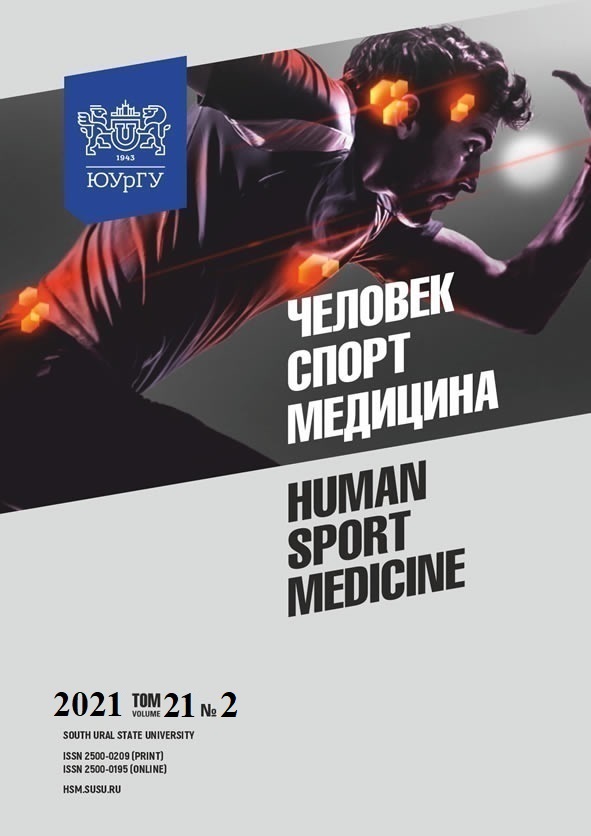FUNCTIONAL STATE MONITORING IN TAEKWONDO ATHLETES BY MEANS OF HEART RATE VARIABILITY IN THE PRE-COMPETITION PERIOD
Abstract
Aim. The paper aims to assess the functional state of highly skilled taekwondo athletes at a training event in Japan and, therefore, to determine the period of adaptation in athletes and their readiness for competitions in unusual climatic conditions. Materials and methods. The study involved 14 highly skilled taekwondo athletes. The assessment of functional state and its dynamics was carried out by means of heart rate variability data. The indicators of temporal and spectral analysis were used: SI, ТР, HF, LF, VLF, ULF and 30:15. It was suggested to use the data on general regulation reserves (TP), operational adaptation reserves (LF + HF at rest), efficiency when performing the functional test (HF power in the orthostatic test, LF/HF growth in the orthostatic test compared to rest, 30:15) and the stress level of autonomic regulation (LF/HFbackground*LF/HForthostatic). Results. It was revealed that the background functional state of athletes before flight to Japan was characterized by high general regulation reserves with the prevalence of HF spectrum activity, significant or moderate parasympathotonia, the absence of stress in regulation mechanisms and an adequate reaction to orthostasis. The unfavorable climatic conditions of Japan, as well as the long flight significantly worsen the functional state of taekwondo athletes, which result in the increased stress of regulation mechanisms, considerable sympathicotonia and paradoxical response to orthostasis. Conclusion. Changing the training process in order to control heart rate variability indicators allowed to adapt successfully to unusual training conditions and to simulate training sessions for the upcoming Olympic Games.
References
References on translit
Copyright (c) 2021 Human. Sport. Medicine

This work is licensed under a Creative Commons Attribution-NonCommercial-NoDerivatives 4.0 International License.















